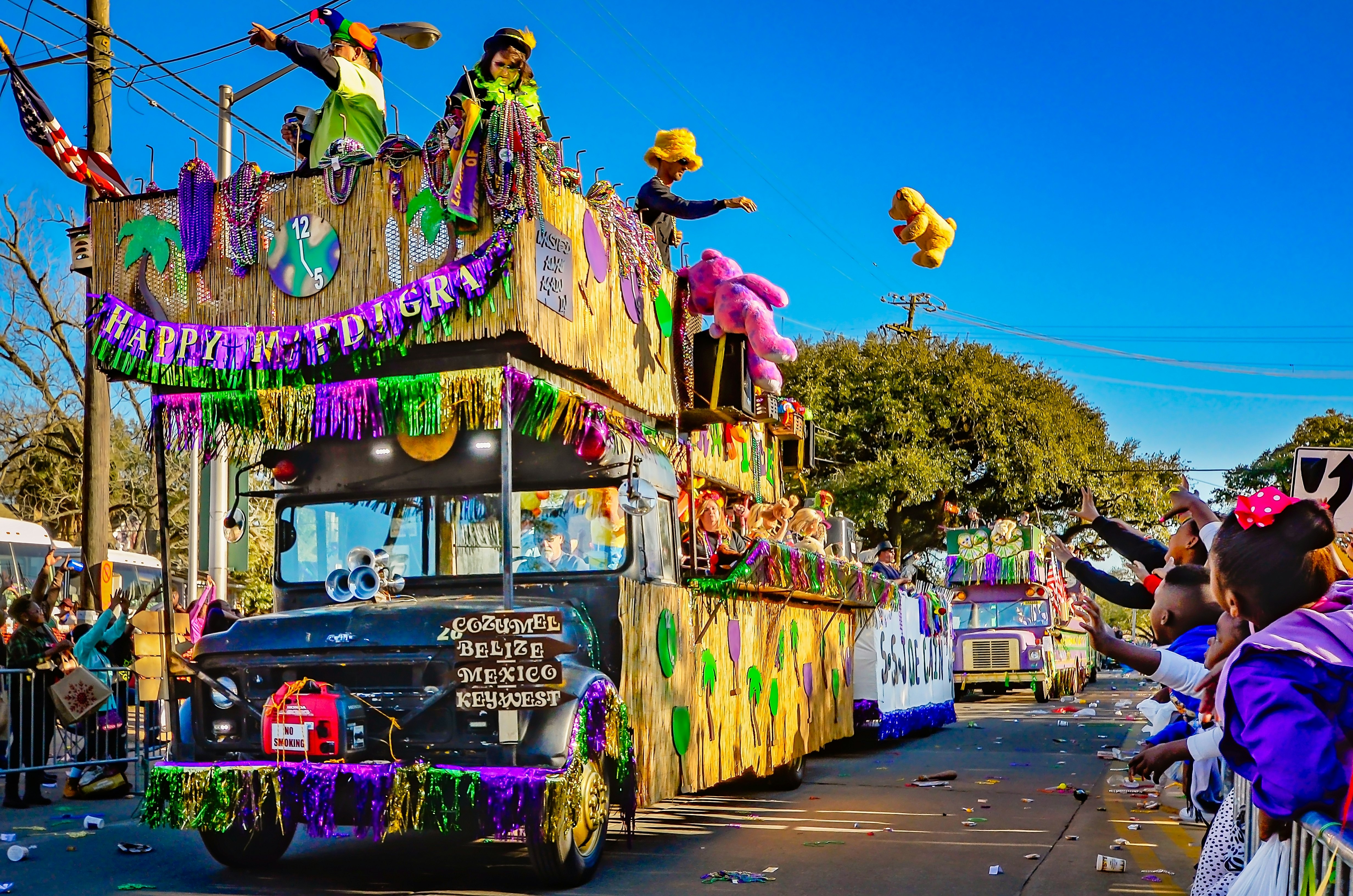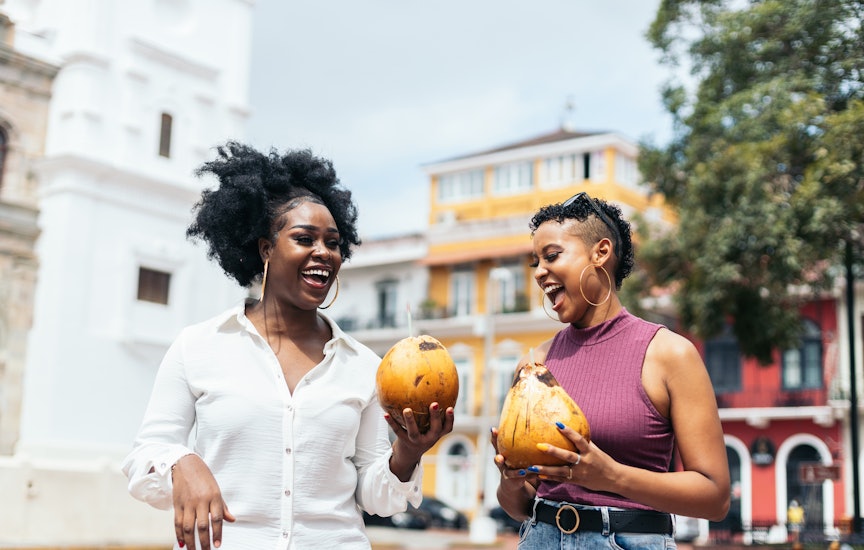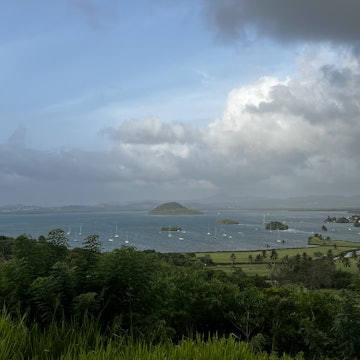

Carnival in Trinidad and Tobago. John de la Bastide/Shutterstock
With the holiday season over, Carnival is creeping towards us, which means it's time a difficult question – where should you go to celebrate one of the world's greatest festivals?
And there are some truly spectacular events, from Rio de Janeiro's Carnaval to Apokries in the Greek city of Patras. Here, we'll talk you through the world's best Carnival celebrations, but first, here's some background on this sometimes months-long celebration.

What is Carnival?
Carnival – also known as Carnaval, Mardi Gras, or Apokries – is one of the biggest parties in the world. It's a festival that weaves together music, dance, lavish costumes, the sacred and the profane, spanning multiple cultural traditions. The end result is an all-out bash that takes over towns and transforms revelers all around the globe.
Although it takes many names, in many different countries, most events carrying the moniker “Carnival” can trace their lineage back to the Dionysian festivals of Athens in Greece. These annual celebrations marked the end of winter, and featured costumes, heavy drinking, dancing, unrestrained sexual activity and a general disregard for normal social constructs.
As Christianity gained power and authority, its leaders sought to repurpose these pagan revelries, adopting and adapting them to fit within the religious calendar. Instead of celebrating the coming of spring, Carnival came to mark a last hurrah before the beginning of Lent, the Christian month of fasting.
The church's decision to pursue the salvation (rather than eradication) of these ancient celebrations played an important role in the preservation of traditional culture, while simultaneously providing the masses with an escape valve, offering relief from the pressures and stresses of daily life.
With Carnival being such an essential part of cultural life around the world, you'll find events that you can join in nearly every country, with most taking place between February and March. Here are a few of our favorite Carnival celebrations across the globe.

1. Rio de Janeiro, Brazil
Best for non-stop revelry
Dates: February/March
Considered to be the largest Carnival in the world, Rio de Janeiro's Carnaval is the event that most often comes to mind when someone mentions the word.
Attracting around seven million revelers to Brazil's largest city each year, the celebrations run for 24 hours a day, every day from the Friday before Carnaval until Ash Wednesday, the first day of Lent. The festival is divided into two main parts – daytime street parties, and the famous samba parades at the Sambódromo, which take place from sunset to sunrise.
If you're keen to brave the event, you'll want to come prepared. To enter the Sambódromo, you'll need to purchase tickets well ahead of the event. Prices start at R$120 for bench seats, or R$1700 for box seats; Bookers International is a popular booking site.
The street parties are free to attend, but require stamina. Pull on your favorite Halloween-style costume (the sequins and feathers are reserved for the Sambódromo) and sneakers that you don't mind getting ruined, and liberally apply sunscreen before hitting the streets of Rio for this no-holds-barred street bash.
Top tip: Eat a large breakfast before you start, and drink plenty of water. Secure your valuables with a money belt and use the buddy system (ie travel in a pair with a trusted companion) to stay safe.

2. Oruro, Bolivia
Best for folklore lovers
Dates: February/March
Oruro, Bolivia is the folklore capital of Carnival. Every year, this small mining town welcomes up to 400,000 people for a 10-day-long celebration that's been recognized by UNESCO as a "Masterpiece of the Oral and Intangible Heritage of Humanity.”
Oruro's Carnaval officially honors the Virgen del Socavón, the patron saint of Oruro's miners. However, its elaborate parades mix both Catholic and Indigenous traditions, retelling cherished folk tales from the region, some predating the arrival of Christianity.
The 4km-long parade starts at 7am, following Bolívar St to the Santuario de la Virgen del Socavón in the center of Oruro, and the festivities have been known to last for up to 20 hours.
Revelers line the street to watch theatrical dances accompanied by marching bands. La Diablada (the Dance of the Devil) is a notable crowd favorite; led by Lucifer, it depicts an epic, seven-act battle between good and evil.
Planning tip: You can watch the dancers in their elaborate devil masks from the sidelines, but if you join the crowds in the street, be prepared for water balloon fights, spray foam battles, or even buckets of water being dumped on your head from the balconies above. A raincoat is a sensible precaution!

3. Junkanoo, Bahamas
Best for holiday-season revelry
Dates: Boxing Day to New Year's Day
Unlike the many Carnival celebrations that coincide with the beginning of spring, Junkanoo in the Bahamas starts on December 26 (Boxing Day) and ends on January 1 at the start of the new year.
The festivities started during the colonial period, when slave owners granted enslaved Africans 3 days off from forced labor during the holiday season, which they celebrated by traveling from house to house singing songs and dancing in colorful costumes and masks.
These days, Junkanoo celebrations have evolved into full-on street parades with elaborate costumes and exuberant choreography, performed to the rhythm of goatskin drums and cowbells. Visitors are invited to watch the parade at street level, or from grandstands along the parade route, and to join the parties that take place across the city after nightfall.
Planning tip: Although the largest Junkanoo parade is held on Bay St in downtown Nassau, there are Junkanoo celebrations across all of the islands of the Bahamas, and for the insatiable, even across the calendar year.

4. Mobile, Alabama
Best for masked balls and mystics
Dates: February/March
Known locally as Mardi Gras, the Carnival in Mobile, Alabama is considered to be the oldest Carnival celebration in the United States. Although it's been overshadowed by its more famous neighbor in New Orleans, Mobile's Mardi Gras is still a force to be reckoned with, and an essential stop for the Carnival faithful.
Mobile's Mardi Gras is run by secretive “mystic” societies, who host formal, invitation-only masked balls. These mysterious folks also arrange the public parade, where members of the societies, traveling on floats or on horseback, throw gifts such as plastic bead necklaces, pretend doubloon coins and candies to revelers in Mobile's streets.

5. Trinidad and Tobago
Best for dancing and mud wars
Date: February/March
The Carnival tradition was brought to Trinidad and Tobago by French colonizers in the 18th century, but enslaved Africans were banned from taking part in the festivities. In turn, enslaved Africans organized their own gatherings called Canboulay, in which they would sing, dance and satirize their masters in “mas” (short for masquerade costumes) – a tradition that evolved into today's mas bands.
After emancipation, the Canboulay celebrations became increasingly rowdy, and the French authorities attempted to shut the festivities down by banning drumming. Wily revelers used bamboo sticks and steel pans instead, laying the foundations for the calypso and soca steel drum beats that define the festival today.
Planning tip: To join in, sign up for a mas band (you'll have to buy one of the group’s extravagant costumes), attend a ticketed "fete” party, or participate in J’Ouvert – a Shrove Monday celebration where revelers pelt each other with mud, water and colored paint before sunrise.

6. Patras, Greece
Best for parades and ritual pyrotechnics
Dates: January–February/March
The nation that birthed the Carnival tradition still has a festival to call its own. The Patras Carnival, also known as Patrino Karnavali or Apokries, is the largest Carnival event in Greece, attracting more than 750,000 revelers to this southern port town.
The event begins on St Anthony's Day (January 17) and continues through to Clean Monday (the start of Greek Lent), with a series of balls, parades, treasure huts and even a children's Carnival with more than 5000 pint-sized participants.
Celebrations build up to a Saturday evening parade called Nihterini Podarati (Night Parade on Foot), then a final Sunday parade to the St Nikolaos St pier, where revelers set fire to the float of the "Carnival King" at sunset.

7. Sydney, Australia
Best for LGBTIQ+ travelers
Dates: February
While it is not a Carnival in the traditional sense, the Gay and Lesbian Mardi Gras in Sydney is a tribute to the LGBTIQ+ community, and an important way to draw attention to LGBTIQ+ culture and identity in Australia's largest city. In many ways, it's a perfect modern example of everything Carnival was meant to be about.
Started in 1978 by gay rights activists, the festival is considered to be the world's largest Pride event, and it has become a key event for the international LGBTIQ+ community. The date of the festival isn't tied to the Christian calendar, but it does take place during the pre-Lent Carnival season, with creative floats, colorful outfits and incredible performances.

8. Olinda, Brazil
Best for giant dolls and street parties
Dates: February/March
One of Brazil's biggest Carnival celebrations takes place far from any major metropolis – you'll find it in the small northeastern town of Olinda. While the setting may be a little off the radar, the festival's parade of giant papier-maché dolls draws visitors from across the country and the world.
The Bonecos (Dolls) of Olinda are paraded through the streets accompanied by hordes of revelers. Each pays homage to a real person or a Carnival legend – the Homem da Meia-noite (Midnight Man) and Zé Pereira (hailed as the godfather of Carnival) are perhaps the two most famous characters.
Visitors can join nearly a million people parading through the streets and dancing the frevo – a typical regional dance – during this completely free and unique street Carnival.

Carnival etiquette and travel tips
Plan ahead: Booking accommodations at the last minute for any of the world's Carnival celebrations can be impossible. If you do find somewhere, it will be absurdly expensive. Plan months in advance, especially if you're keen to attend any ticketed events during the festivities.
What to wear: If you plan to party from sunup to sundown, you'll definitely want a pair of comfortable, closed-toed shoes to get you through the day. After an event such as Rio's street Carnival, however, they're likely to end their life in the trash can, so bring footwear you don't mind throwing away afterward. Likewise, clothes worn to J’Ouvert in Trinidad and Tobago probably won't make it out of the festival alive.
Dress codes: Every Carnival has its own dress code for participants, and to join in many of the parades, you'll want to dress the part. Whether you're donning an elaborate Junkanoo costume, a mas band getup, or a creative Halloween-style costume for Rio's Carnaval, make sure your outfit is comfortable before you set off. Stay hydrated and put on plenty of sun protection before you hit the streets.
Safety: While not all Carnivals have safety issues, petty theft can be a risk. If you're planning to join the Carnival crowds, get yourself a money belt and bring a spare, older phone without your bank apps installed. Have your hotel address written down separately on a piece of paper and turn off tap-and-pay features on your phone and cards if possible. Sexual harassment is also a risk. Traveling in a group can reduce the chances of problems.
















